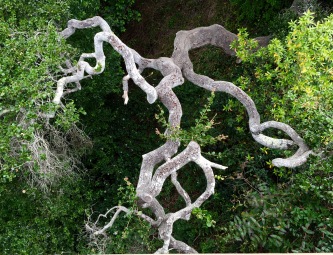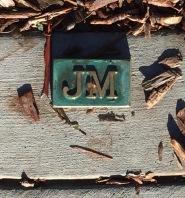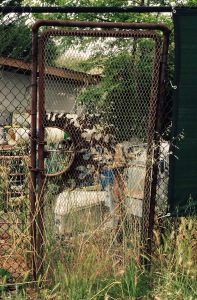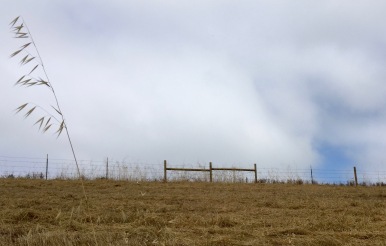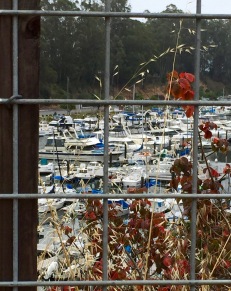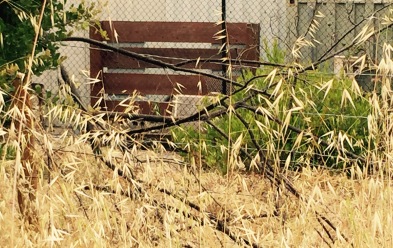Here along the northern reach of the gorgeous Monterey Bay, we usually don’t think of ourselves as living in an urban environment. But we do.
The density (people/square mile) of our coastal region is similar to San Jose and San Diego. Why is that so? Because #1, our coastal shelf region is relatively flat; #2, the rail line, built in the 1880’s, concentrated growth nearby; #3, early development of vacation homes, christian church camps, apartments, & mobile home parks established small lots along the coast; & #4, the post-WWII Westward Boom brought loads of people from the central California Valley & US Midwest who sought to retire or start anew in our gloriously benign climate. Our elected officials at the time sought to accommodate this growth where these folks wanted to live (they weren’t stupid): along the coast, in the fruitful Pajaro Valley, & along the San Lorenzo River valley in the redwoods.
And, because most of us resist the notion that we live in an urban area (still…really?…with our University & our well-off Silicon Valley dot.commers & housing displacement with its resulting trauma & traffic, etc??), it’s a greater struggle than you might think to get us to embrace common urban amenities.
Such as light rail or trams or streetcars along our already publicly owned Coast Rail Line.
Which parallels horribly congested Highway 1. Which would OBVIOUSLY provide a comfortable & congenial alternative to sitting alone in our cars for thousands of local residents & employees, commuters & visitors, etc. It would make a HUGE difference if even we only used it one day/week (which = 20% reduction in car traffic).
Here’s a letter that I sent to our Regional Transportation Commission about a study they’re wrapping up that looks at options along our urban coastal corridor. This study – the Unified Corridor Investment Study – is a good analysis and imo, the direction it offers us is clear. If your a numbers type, here’s a concise, multi-year cost/benefit analysis prepared by my brilliant friend Bruce Sawhill.
Of course, nothing worth doing is ever easy. Recently, I’ve been part of a small but amazing team of urban warriors [“someone with strong political ideas who fights for their cause in a town or city”] working to defeat a devious initiative measure related to the rail 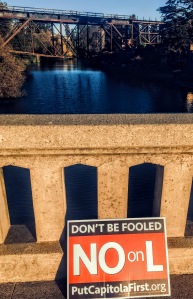 line in our tiny coastal City of Capitola. The proponents of this measure, who are aligned with Santa Cruz County Greenway [such a nice name, too bad it’s associated more with bucks than bushes] – these folks want to tear out the Santa Cruz coast rail line & pave it over exclusively for a bicycle (& electric/self-driving-whatevers) freeway. They’re test-driving this concept with an initiative election focussed on picking-off this small, walkable, compact town with its 10K population – less than 8% of the 130,000+ greater coastal urban area population pictured above.
line in our tiny coastal City of Capitola. The proponents of this measure, who are aligned with Santa Cruz County Greenway [such a nice name, too bad it’s associated more with bucks than bushes] – these folks want to tear out the Santa Cruz coast rail line & pave it over exclusively for a bicycle (& electric/self-driving-whatevers) freeway. They’re test-driving this concept with an initiative election focussed on picking-off this small, walkable, compact town with its 10K population – less than 8% of the 130,000+ greater coastal urban area population pictured above.
Greenway’s slogan is “Save Our Trestle”… huh?! This train trestle, which has traversed Soquel Creek for the past 130 years & reconstructed at least four times, isn’t going anywhere anytime soon. Their other slogan is “Trail Now”, truly a misnomer: pulling out the tracks on an active, federally-regulated rail line isn’t like making a couple of trips to the dentist for a new smile (if you can afford it).
Like many long time Santa Cruz County residents, I’ve lived various places in the county over the years. During my second year at UCSC, home was a cottage on Riverview Avenue near that trestle. I and three college roommates had initially rented half of a tiny Lawn Way cottage 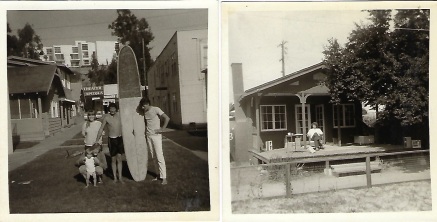 behind the Six Sisters along the Capitola Esplanade, but our landlady, who owned one of the Sisters, evicted us when she apparently observed too many young men visiting those sunny young women from her back door vantage point. Capitola was way out in the boonies in 1969: four mornings a week, the four of us would zip along the freeway up to campus, no traffic at all. I especially loved the creekside path right outside our front door with its easy stroll to the beach & wharf. The freight train to & from the Davenport cement plant went by twice a day. We barely noticed it.
behind the Six Sisters along the Capitola Esplanade, but our landlady, who owned one of the Sisters, evicted us when she apparently observed too many young men visiting those sunny young women from her back door vantage point. Capitola was way out in the boonies in 1969: four mornings a week, the four of us would zip along the freeway up to campus, no traffic at all. I especially loved the creekside path right outside our front door with its easy stroll to the beach & wharf. The freight train to & from the Davenport cement plant went by twice a day. We barely noticed it.
It’s been (mostly) fun spending time in Capitola again. Otherwise I rarely get over there due to too many darn cars and not enough sidewalk space. It’s really beyond me why some Capitola folks resist making it easier for people to get to & from & around in their sweet but car-congested little town. I know people don’t like change, but sign up for any yoga or meditation or anthropology class & the first thing that’s drummed in is that life is change. Denial is always an option, for sure, but look where that’s gotten us.
So, to all you urban warriors out there fighting for the greater good: be well & go forth!
________________
I hope you noticed that the map is pumpkin-colored! Have a soulful Halloween & Dia de Los Muertos.
The final vote tally (12/4/18) is 2526-2320 in favor of Yes. We lost this round.


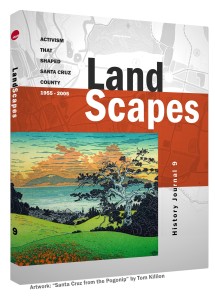
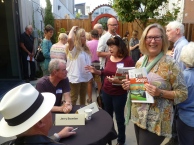
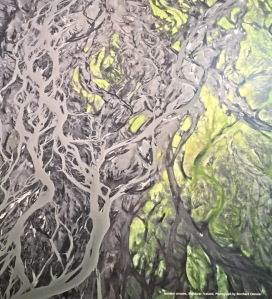
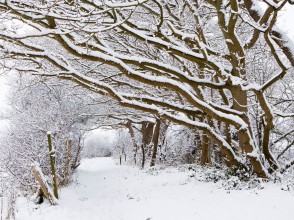
 developed moral codes condemning & silencing talk about suicide. The person who killed themselves was labeled ‘bad’ – sometimes not even worthy of a burial – which shamed & blamed the family of survivors. Also, pervasive (& legitimate) worry about ‘
developed moral codes condemning & silencing talk about suicide. The person who killed themselves was labeled ‘bad’ – sometimes not even worthy of a burial – which shamed & blamed the family of survivors. Also, pervasive (& legitimate) worry about ‘ Our experience of the suicide of another is deeply affected by our relationship with that person. Those relationships need more descriptive words – to help us, the living, figure out less isolating ways to survive this common kind of death:
Our experience of the suicide of another is deeply affected by our relationship with that person. Those relationships need more descriptive words – to help us, the living, figure out less isolating ways to survive this common kind of death:

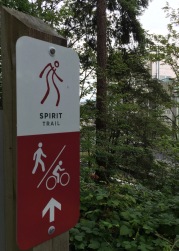



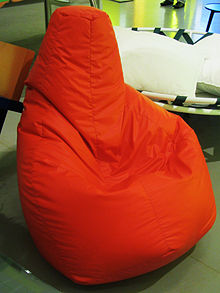
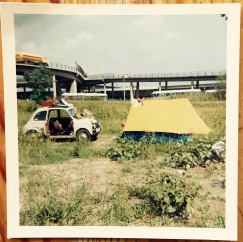 to actually sit in & touch the free-form, luxuriously large red leather bag. The proprietor eyed us suspiciously: we didn’t fit his usual customer mould (..hmmm, best not to take measurements). Afterward, charged up with more sips of expresso, we sketched the remembered design at an outdoor cafe a few ponti away.
to actually sit in & touch the free-form, luxuriously large red leather bag. The proprietor eyed us suspiciously: we didn’t fit his usual customer mould (..hmmm, best not to take measurements). Afterward, charged up with more sips of expresso, we sketched the remembered design at an outdoor cafe a few ponti away. a colorful collection of other
a colorful collection of other  English mit der jungen Amerikanerin.
English mit der jungen Amerikanerin.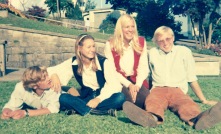 her dorm on the other side of town & drove west to Teufen, Switzerland, to liberate our younger sister Sandy from her ghastly boarding school for a few hours: the housemothers were a-twitter but there was no overruling fast-talking Deutsche boys. We fervently hoped our parents, in Madrid at the time, wouldn’t get word of the Boarding School Security Breach.
her dorm on the other side of town & drove west to Teufen, Switzerland, to liberate our younger sister Sandy from her ghastly boarding school for a few hours: the housemothers were a-twitter but there was no overruling fast-talking Deutsche boys. We fervently hoped our parents, in Madrid at the time, wouldn’t get word of the Boarding School Security Breach.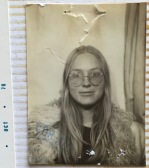 German Literature major upon arrival in Santa Cruz, but that barely lasted one quarter: reading Thomas Mann’s Der Tod in Venedig wasn’t nearly as fun as designing furniture on tiny Venetian serviettes.
German Literature major upon arrival in Santa Cruz, but that barely lasted one quarter: reading Thomas Mann’s Der Tod in Venedig wasn’t nearly as fun as designing furniture on tiny Venetian serviettes.
 Looking back, 2015 stood out as a turning point in the decline of the church of football. Similar to the demise of some other religions, it was hard to see how it could’ve happened if one gloried in the weekly hallelujas – & a lot of us did back then. 2015 was the year, though, that people started noticing the increasingly steady stream of scientific information about brain damage seeping under the wall of
Looking back, 2015 stood out as a turning point in the decline of the church of football. Similar to the demise of some other religions, it was hard to see how it could’ve happened if one gloried in the weekly hallelujas – & a lot of us did back then. 2015 was the year, though, that people started noticing the increasingly steady stream of scientific information about brain damage seeping under the wall of 
 opening celebration of the Arana Gulch Pathways connecting Live Oak & Santa Cruz. YAY for the perseverance of many, many people over the 35+ year history of this project!
opening celebration of the Arana Gulch Pathways connecting Live Oak & Santa Cruz. YAY for the perseverance of many, many people over the 35+ year history of this project! The road was called the ‘Broadway-Brommer Connection’, & there was even a concept at one point to have an additional road veer up through the gulch to Capitola Road. Yeah, those were the pave-it-over days – good riddance, I say. & the annexation that never happened? …well that’s
The road was called the ‘Broadway-Brommer Connection’, & there was even a concept at one point to have an additional road veer up through the gulch to Capitola Road. Yeah, those were the pave-it-over days – good riddance, I say. & the annexation that never happened? …well that’s 